-
Executive Summary
-
Introduction
-
Definition
-
16
-
Scope Of The Study 16
-
Assumptions 16
-
2.4
-
Market Structure 17
-
Research Methodology
-
Research Process
-
18
-
Primary Research 19
-
Secondary Research 19
-
Market Size Estimation 19
-
Forecast Model 21
-
Market
-
Dynamics
-
Introduction 22
-
Market Drivers 23
- Booming Automotive Industry Coupled With Increasing Registration Of New
- Expansion Of Global Auto-Manufacturers Into Emerging Markets
- Stringent Government Regulations On Reducing Vehicle Emission
-
Cars 23
-
23
-
24
-
Market Restraints 24
- Availability Of Low Cost
- Increasing Pricing Pressure 24
-
Conventional Technologies 24
-
Market Trends & Opportunities 25
- Advanced Automotive
- Increased Investment In Automotive Engine
-
Industry Technologies 25
-
Management System Development Technologies 25
-
Market Factor Analysis
-
Value Chain Analysis 26
- Automotive Engine Management
- Manufacture & Assembly 26
- Distribution 27
- End-Use 27
-
System Components Supply 26
-
Porter’s
- Threat Of New Entrants 28
- Bargaining
- Bargaining Power Of Buyers 28
- Rivalry 29
-
Five Forces 27
-
Power Of Suppliers 28
-
5.2.4
-
Threat Of Substitutes 28
-
Global Automotive
-
Engine Management System Market, By Component
-
Introduction 30
- Engine Control Unit (ECU) 32
- Engine Sensors 32
- Fuel Pump 32
-
Global Automotive Engine Management System
-
Market, By Engine Type
-
Introduction 33
- Gasoline
- Diesel Engine 35
-
Engine 35
-
Global Automotive Engine
-
Management System Market, By Vehicle Type
-
Introduction 36
- Passenger Vehicles 37
- Commercial Vehicles 37
-
9
-
Global Automotive Engine Management System Market, By Region
-
Introduction
-
38
-
North America 40
- U.S. 43
- Canada
-
45
-
Europe 47
- Germany 50
- UK 51
- Italy 53
- France 54
- Rest Of Europe
-
56
-
Asia-Pacific 58
- China 61
- Japan
- India 65
- Rest Of Asia-Pacific 67
- South America 72
- Middle East
-
63
-
9.5
-
Rest Of The World 69
-
& Africa 73
-
Competitive Landscape
-
Company
-
Profiles
-
Continental AG 77
- Company Overview 77
- Product/Service Offering 77
- Financial Overview
- Strategy 79
- Key Developments 79
- SWOT Analysis 80
-
78
-
Denso Corporation 81
- Product/Service Offering 81
- Key Developments 83
- Strategy
- SWOT Analysis 84
-
11.2.1
-
Company Overview 81
-
11.2.3
-
Financial Overview 82
-
83
-
Delphi Automotive PLC 85
- Company Overview 85
- Product/Service Offering 85
- Financial Overview 86
- Strategy 87
-
11.3.5
-
SWOT Analysis 87
-
Robert Bosch 88
- Company Overview
- Product/Service Offering 88
- Financial Overview
- Key Developments 90
- Strategy 90
- SWOT Analysis 90
-
88
-
88
-
Hella KgaA Hueck 91
- Product/Service Offering 91
- Strategy 92
- SWOT Analysis
-
11.5.1
-
Company Overview 91
-
11.5.3
-
Financial Overview 91
-
93
-
Hitachi Automotive Systems, Ltd. 94
- Company
- Product/Service Offering 94
- Financial
- Strategy 95
- SWOT Analysis 96
-
Overview 94
-
Overview 94
-
Sensata Technologies, Inc. 97
- Company Overview 97
- Product/Service Offering 97
- Financial Overview
- Strategy 99
- SWOT Analysis 99
- Company Overview 100
- Product/Service
- Financial Overview 100
- Key Developments
- Strategy 102
-
98
-
11.8
-
NGK Spark Plug 100
-
Offering 100
-
102
-
Infineon Technologies 103
- Company Overview 103
- Product/Service Offering 103
- Financial Overview 104
- Strategy 105
-
11.9.5
-
SWOT Analysis 105
-
MBE Systems 106
- Company Overview
- Product/Service Offering 106
- Financial
- SWOT Analysis 107
-
106
-
Overview 106
-
List Of Tables
-
GLOBAL AUTOMOTIVE ENGINE MANAGEMENT SYSTEM MARKET, BY COMPONENT,
-
GLOBAL AUTOMOTIVE ENGINE MANAGEMENT
-
SYSTEM MARKET, BY ENGINE TYPE, 2024-2032 (USD BILLION) 34
-
GLOBAL
-
AUTOMOTIVE ENGINE MANAGEMENT SYSTEM MARKET, BY VEHICLE TYPE, 2024-2032 (USD BILLION)
-
37
-
GLOBAL AUTOMOTIVE ENGINE MANAGEMENT SYSTEMS MARKET, BY REGION,
-
NORTH AMERICA AUTOMOTIVE ENGINE MANAGEMENT
-
SYSTEMS MARKET, BY COUNTRY, 2024-2032 (USD BILLION) 41
-
NORTH
-
AMERICA AUTOMOTIVE ENGINE MANAGEMENT SYSTEMS MARKET, BY COMPONENT, 2024-2032 (USD
-
BILLION) 41
-
NORTH AMERICA AUTOMOTIVE ENGINE MANAGEMENT SYSTEMS
-
MARKET, BY ENGINE TYPE, 2024-2032 (USD BILLION) 42
-
NORTH AMERICA
-
AUTOMOTIVE ENGINE MANAGEMENT SYSTEMS MARKET, BY VEHICLE TYPE, 2024-2032 (USD BILLION)
-
42
-
US AUTOMOTIVE ENGINE MANAGEMENT SYSTEMS MARKET, BY COMPONENT,
-
US AUTOMOTIVE ENGINE MANAGEMENT SYSTEMS
-
MARKET, BY ENGINE TYPE, 2024-2032 (USD BILLION) 43
-
US AUTOMOTIVE
-
ENGINE MANAGEMENT SYSTEMS MARKET, BY VEHICLE TYPE, 2024-2032 (USD BILLION) 44
-
CANADA AUTOMOTIVE ENGINE MANAGEMENT SYSTEMS MARKET, BY COMPONENT,
-
CANADA AUTOMOTIVE ENGINE MANAGEMENT
-
SYSTEMS MARKET, BY ENGINE TYPE, 2024-2032 (USD BILLION) 45
-
CANADA
-
AUTOMOTIVE ENGINE MANAGEMENT SYSTEMS MARKET, BY VEHICLE TYPE, 2024-2032 (USD BILLION)
-
46
-
EUROPE AUTOMOTIVE ENGINE MANAGEMENT SYSTEMS MARKET, BY COUNTRY,
-
EUROPE AUTOMOTIVE ENGINE MANAGEMENT
-
SYSTEMS MARKET, BY COMPONENT, 2024-2032 (USD BILLION) 48
-
EUROPE
-
AUTOMOTIVE ENGINE MANAGEMENT SYSTEMS MARKET, BY ENGINE TYPE, 2024-2032 (USD BILLION)
-
49
-
EUROPE AUTOMOTIVE ENGINE MANAGEMENT SYSTEMS MARKET, BY VEHICLE
-
TYPE, 2024-2032 (USD BILLION) 49
-
GERMANY AUTOMOTIVE ENGINE MANAGEMENT
-
SYSTEMS MARKET, BY COMPONENT, 2024-2032 (USD BILLION) 50
-
GERMANY
-
AUTOMOTIVE ENGINE MANAGEMENT SYSTEMS MARKET, BY ENGINE TYPE, 2024-2032 (USD BILLION)
-
50
-
GERMANY AUTOMOTIVE ENGINE MANAGEMENT SYSTEMS MARKET, BY VEHICLE
-
TYPE, 2024-2032 (USD BILLION) 51
-
UK AUTOMOTIVE ENGINE MANAGEMENT
-
SYSTEMS MARKET, BY COMPONENT, 2024-2032 (USD BILLION) 51
-
UK
-
AUTOMOTIVE ENGINE MANAGEMENT SYSTEMS MARKET, BY ENGINE TYPE, 2024-2032 (USD BILLION)
-
52
-
UK AUTOMOTIVE ENGINE MANAGEMENT SYSTEMS MARKET, BY VEHICLE
-
TYPE, 2024-2032 (USD BILLION) 52
-
ITALY AUTOMOTIVE ENGINE MANAGEMENT
-
SYSTEMS MARKET, BY COMPONENT, 2024-2032 (USD BILLION) 53
-
ITALY
-
AUTOMOTIVE ENGINE MANAGEMENT SYSTEMS MARKET, BY ENGINE TYPE, 2024-2032 (USD BILLION)
-
53
-
ITALY AUTOMOTIVE ENGINE MANAGEMENT SYSTEMS MARKET, BY VEHICLE
-
TYPE, 2024-2032 (USD BILLION) 54
-
FRANCE AUTOMOTIVE ENGINE MANAGEMENT
-
SYSTEMS MARKET, BY COMPONENT, 2024-2032 (USD BILLION) 54
-
FRANCE
-
AUTOMOTIVE ENGINE MANAGEMENT SYSTEMS MARKET, BY ENGINE TYPE, 2024-2032 (USD BILLION)
-
55
-
FRANCE AUTOMOTIVE ENGINE MANAGEMENT SYSTEMS MARKET, BY VEHICLE
-
TYPE, 2024-2032 (USD BILLION) 55
-
REST OF EUROPE AUTOMOTIVE ENGINE
-
MANAGEMENT SYSTEMS MARKET, BY COMPONENT, 2024-2032 (USD BILLION) 56
-
TABLE
-
REST OF EUROPE AUTOMOTIVE ENGINE MANAGEMENT SYSTEMS MARKET, BY ENGINE TYPE, 2024-2032
-
(USD BILLION) 56
-
REST OF EUROPE AUTOMOTIVE ENGINE MANAGEMENT
-
SYSTEMS MARKET, BY VEHICLE TYPE, 2024-2032 (USD BILLION) 57
-
TABLE 34
-
ASIA-PACIFIC AUTOMOTIVE ENGINE MANAGEMENT SYSTEMS MARKET, BY COUNTRY, 2024-2032
-
(USD BILLION) 59
-
ASIA-PACIFIC AUTOMOTIVE ENGINE MANAGEMENT SYSTEMS
-
MARKET, BY COMPONENT, 2024-2032 (USD BILLION) 59
-
ASIA-PACIFIC
-
AUTOMOTIVE ENGINE MANAGEMENT SYSTEMS MARKET, BY ENGINE TYPE, 2024-2032 (USD BILLION)
-
60
-
ASIA-PACIFIC AUTOMOTIVE ENGINE MANAGEMENT SYSTEMS MARKET,
-
BY VEHICLE TYPE, 2024-2032 (USD BILLION) 60
-
CHINA AUTOMOTIVE
-
ENGINE MANAGEMENT SYSTEMS MARKET, BY COMPONENT, 2024-2032 (USD BILLION) 61
-
CHINA AUTOMOTIVE ENGINE MANAGEMENT SYSTEMS MARKET, BY ENGINE TYPE, 2024-2032
-
(USD BILLION) 61
-
CHINA AUTOMOTIVE ENGINE MANAGEMENT SYSTEMS
-
MARKET, BY VEHICLE TYPE, 2024-2032 (USD BILLION) 62
-
JAPAN AUTOMOTIVE
-
ENGINE MANAGEMENT SYSTEMS MARKET, BY COMPONENT, 2024-2032 (USD BILLION) 63
-
JAPAN AUTOMOTIVE ENGINE MANAGEMENT SYSTEMS MARKET, BY ENGINE TYPE, 2024-2032
-
(USD BILLION) 64
-
JAPAN AUTOMOTIVE ENGINE MANAGEMENT SYSTEMS
-
MARKET, BY VEHICLE TYPE, 2024-2032 (USD BILLION) 64
-
JAPAN AUTOMOTIVE
-
ENGINE MANAGEMENT SYSTEMS MARKET, BY COMPONENT, 2024-2032 (USD BILLION) 65
-
JAPAN AUTOMOTIVE ENGINE MANAGEMENT SYSTEMS MARKET, BY ENGINE TYPE, 2024-2032
-
(USD BILLION) 66
-
JAPAN AUTOMOTIVE ENGINE MANAGEMENT SYSTEMS
-
MARKET, BY VEHICLE TYPE, 2024-2032 (USD BILLION) 66
-
REST OF
-
ASIA-PACIFIC AUTOMOTIVE ENGINE MANAGEMENT SYSTEMS MARKET, BY COMPONENT, 2024-2032
-
(USD BILLION) 67
-
REST OF ASIA-PACIFIC AUTOMOTIVE ENGINE MANAGEMENT
-
SYSTEMS MARKET, BY ENGINE TYPE, 2024-2032 (USD BILLION) 67
-
REST
-
OF ASIA-PACIFIC AUTOMOTIVE ENGINE MANAGEMENT SYSTEMS MARKET, BY VEHICLE TYPE, 2024-2032
-
(USD BILLION) 68
-
REST OF THE WORLD AUTOMOTIVE ENGINE MANAGEMENT
-
SYSTEMS MARKET, BY COUNTRY, 2024-2032 (USD BILLION) 70
-
REST
-
OF THE WORLD AUTOMOTIVE ENGINE MANAGEMENT SYSTEMS MARKET, BY COMPONENT, 2024-2032
-
(USD BILLION) 70
-
REST OF THE WORLD AUTOMOTIVE ENGINE MANAGEMENT
-
SYSTEMS MARKET, BY ENGINE TYPE, 2024-2032 (USD BILLION) 71
-
REST
-
OF THE WORLD AUTOMOTIVE ENGINE MANAGEMENT SYSTEMS MARKET, BY VEHICLE TYPE, 2024-2032
-
(USD BILLION) 71
-
SOUTH AMERICA AUTOMOTIVE ENGINE MANAGEMENT
-
SYSTEMS MARKET, BY COMPONENT, 2024-2032 (USD BILLION) 72
-
SOUTH
-
AMERICA AUTOMOTIVE ENGINE MANAGEMENT SYSTEMS MARKET, BY ENGINE TYPE, 2024-2032 (USD
-
BILLION) 72
-
SOUTH AMERICA AUTOMOTIVE ENGINE MANAGEMENT SYSTEMS
-
MARKET, BY VEHICLE TYPE, 2024-2032 (USD BILLION) 73
-
MIDDLE EAST
-
& AFRICA AUTOMOTIVE ENGINE MANAGEMENT SYSTEMS MARKET, BY COMPONENT, 2024-2032
-
(USD BILLION) 73
-
MIDDLE EAST & AFRICA AUTOMOTIVE ENGINE
-
MANAGEMENT SYSTEMS MARKET, BY ENGINE TYPE, 2024-2032 (USD BILLION) 74
-
TABLE
-
MIDDLE EAST & AFRICA AUTOMOTIVE ENGINE MANAGEMENT SYSTEMS MARKET, BY VEHICLE
-
TYPE, 2024-2032 (USD BILLION) 74
-
-
List Of Figures
-
RESEARCH PROCESS OF MRFR 18
-
TOP DOWN &
-
BOTTOM UP APPROACH 20
-
MARKET DYNAMICS 22
-
FIGURE 4
-
SALES OF NEW VEHICLES, 2024-2032 23
-
VALUE CHAIN ANALYSIS 26
-
PORTER’S FIVE FORCES ANALYSIS 27
-
GLOBAL
-
AUTOMOTIVE ENGINE MANAGEMENT SYSTEM MARKET SHARE, BY COMPONENT, 2024 (%) 30
-
GLOBAL AUTOMOTIVE ENGINE MANAGEMENT SYSTEM MARKET, BY COMPONENT, 2024-2032
-
(USD BILLION) 31
-
GLOBAL AUTOMOTIVE ENGINE MANAGEMENT SYSTEM
-
MARKET SHARE, BY ENGINE TYPE, 2024 (%) 33
-
GLOBAL AUTOMOTIVE
-
ENGINE MANAGEMENT SYSTEM MARKET, BY ENGINE TYPE, 2024-2032 (USD BILLION) 34
-
GLOBAL AUTOMOTIVE ENGINE MANAGEMENT SYSTEM MARKET SHARE, BY VEHICLE
-
TYPE, 2024 (%) 36
-
GLOBAL AUTOMOTIVE ENGINE MANAGEMENT SYSTEM
-
MARKET, BY VEHICLE TYPE, 2024-2032 (USD BILLION) 36
-
GLOBAL
-
AUTOMOTIVE ENGINE MANAGEMENT SYSTEMS MARKET SHARE (%), 2024 38
-
FIGURE
-
GLOBAL AUTOMOTIVE ENGINE MANAGEMENT SYSTEMS MARKET, BY REGION, 2024-2032 (USD
-
BILLION) 39
-
NORTH AMERICA AUTOMOTIVE ENGINE MANAGEMENT SYSTEMS
-
MARKET SHARE (%), 2024 40
-
NORTH AMERICA AUTOMOTIVE ENGINE MANAGEMENT
-
SYSTEMS MARKET, BY COUNTRY, 2024-2032 (USD BILLION) 40
-
EUROPE
-
AUTOMOTIVE ENGINE MANAGEMENT SYSTEMS MARKET SHARE (%), 2024 47
-
FIGURE
-
EUROPE AUTOMOTIVE ENGINE MANAGEMENT SYSTEMS MARKET, BY COUNTRY, 2024-2032 (USD
-
BILLION) 47
-
ASIA-PACIFIC AUTOMOTIVE ENGINE MANAGEMENT SYSTEMS
-
MARKET SHARE (%), 2024 58
-
ASIA-PACIFIC AUTOMOTIVE ENGINE MANAGEMENT
-
SYSTEMS MARKET, BY COUNTRY, 2024-2032 (USD BILLION) 58
-
REST
-
OF THE WORLD AUTOMOTIVE ENGINE MANAGEMENT SYSTEMS MARKET SHARE (%), 2024 69
-
REST OF THE WORLD AUTOMOTIVE ENGINE MANAGEMENT SYSTEMS MARKET, BY COUNTRY,
-
COMPETITOR BENCHMARKING 76
-
CONTINENTAL AG: RECENT FINANCIALS 78
-
CONTINENTAL
-
AG: GEOGRAPHIC REVENUE, 2024 (%) 78
-
CONTINENTAL AG: SEGMENTAL
-
REVENUE, 2024 (%) 79
-
CONTINENTAL AG: SWOT ANALYSIS 80
-
DENSO CORPORATION: RECENT FINANCIALS 82
-
DENSO CORPORATION:
-
GEOGRAPHIC REVENUE, 2024 (%) 82
-
DENSO CORPORATION: SEGMENTAL
-
REVENUE, 2024 (%) 83
-
DENSO CORPORATION: SWOT ANALYSIS 84
-
DELPHI AUTOMOTIVE: RECENT FINANCIALS 86
-
DELPHI
-
AUTOMOTIVE: SEGMENTAL REVENUE, 2024 (%) 86
-
DELPHI AUTOMOTIVE:
-
GEOGRAPHIC REVENUE, 2024 (%) 87
-
DELPHI AUTOMOTIVE: SWOT ANALYSIS
-
87
-
ROBERT BOSCH: RECENT FINANCIALS 88
-
FIGURE 37
-
ROBERT BOSCH: GEOGRAPHIC REVENUE, 2024 (%) 89
-
ROBERT BOSCH:
-
SEGMENTAL REVENUE, 2024 (%) 89
-
ROBERT BOSCH: SWOT ANALYSIS
-
90
-
HELLA KGAA HUECK: RECENT FINANCIALS 91
-
FIGURE
-
HELLA KGAA HUECK: SEGMENTAL REVENUE, 2024 (%) 92
-
HELLA KGAA
-
HUECK: GEOGRAPHIC REVENUE, 2024 (%) 92
-
HELLA KGAA HUECK: SWOT
-
ANALYSIS 93
-
HITACHI AUTOMOTIVE SYSTEMS: RECENT FINANCIALS 94
-
HITACHI AUTOMOTIVE SYSTEMS: SEGMENTAL REVENUE, 2024 (%) 95
-
HITACHI AUTOMOTIVE SYSTEM: SWOT ANALYSIS 96
-
FIGURE
-
SENSATA TECHNOLOGIES: RECENT FINANCIALS 98
-
SENSATA TECHNOLOGIES:
-
GEOGRAPHIC REVENUE, 2024 (%) 98
-
SENSATA TECHNOLOGIES: SEGMENTAL
-
REVENUE, 2024 (%) 99
-
SENSATA TECHNOLOGIESL: SWOT ANALYSIS 99
-
NGK SPARK PLUG: RECENT FINANCIALS 100
-
NGK
-
SPARK PLUG: GEOGRAPHIC REVENUE, 2024 (%) 101
-
NGK SPARK PLUG:
-
SEGMENTAL REVENUE, 2024 (%) 101
-
INFINEON TECHNOLOGY: RECENT
-
FINANCIALS 104
-
INFINEON TECHNOLOGY: SEGMENTAL REVENUE, 2024
-
(%) 104
-
INFINEON TECHNOLOGY: GEOGRAPHIC REVENUE, 2024 (%) 105
-
INFINEON TECHNOLOGY: SWOT ANALYSIS 105
-
MBE
-
SYSTEM: SWOT ANALYSIS 107

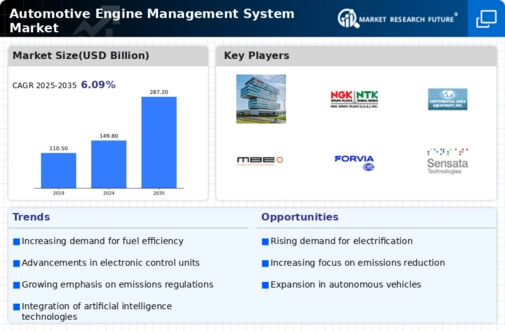
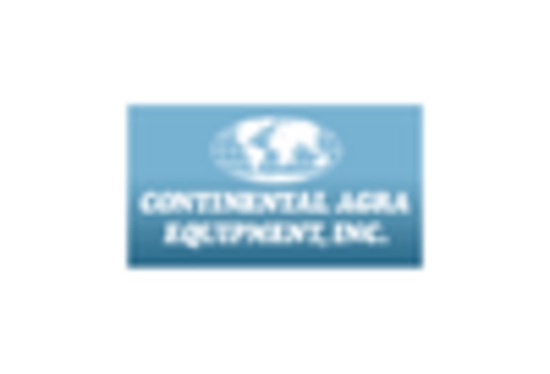
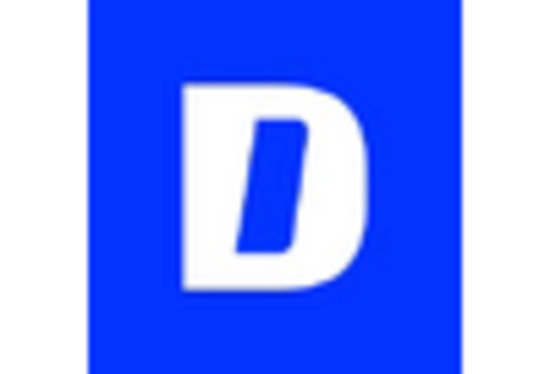
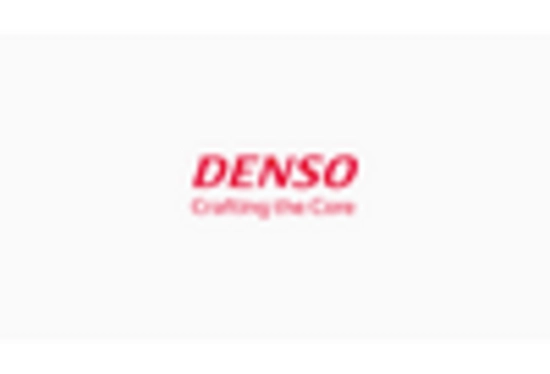
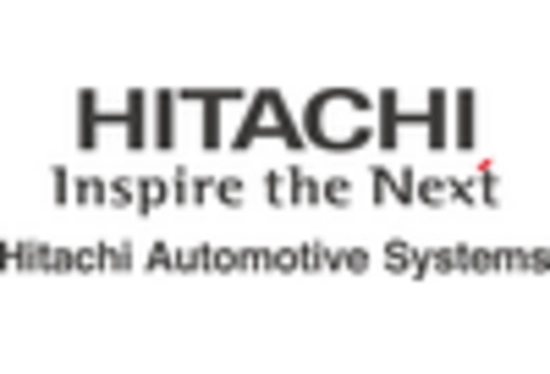
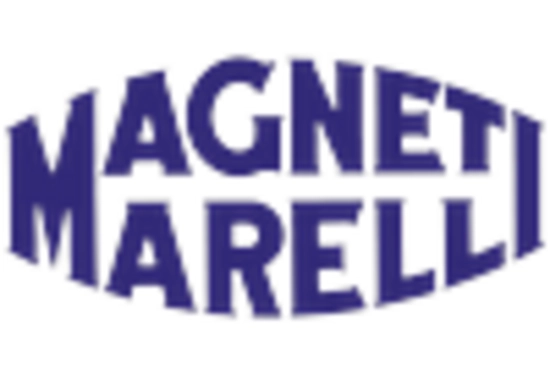
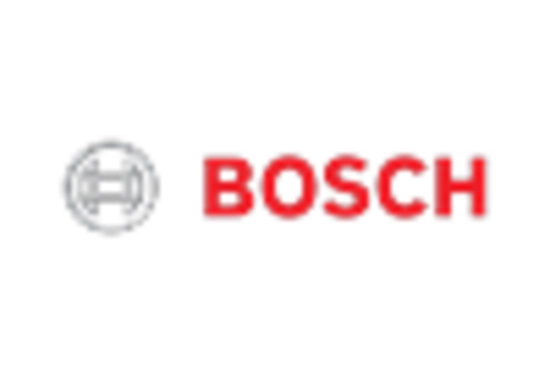

Leave a Comment